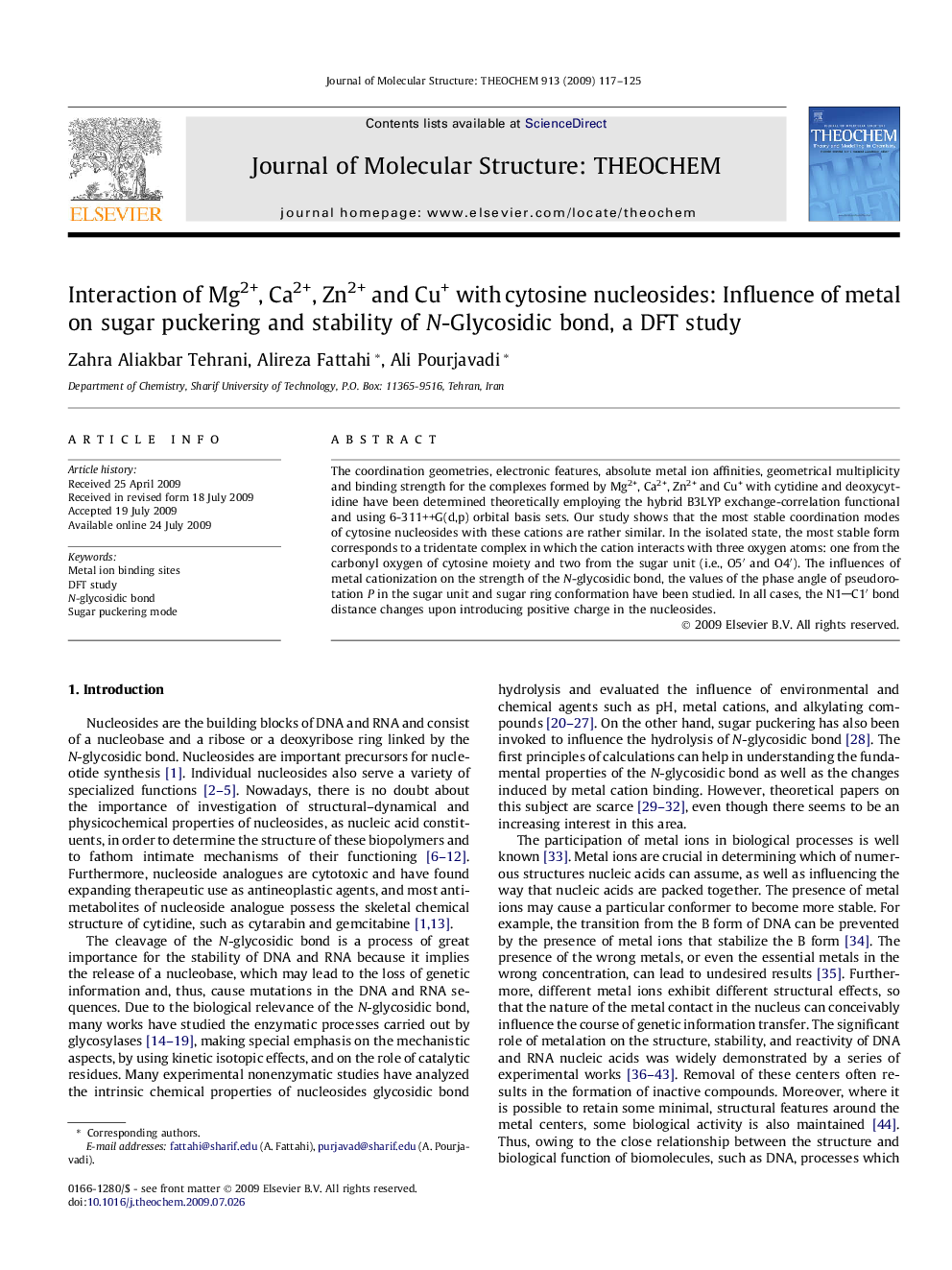| Article ID | Journal | Published Year | Pages | File Type |
|---|---|---|---|---|
| 5417308 | Journal of Molecular Structure: THEOCHEM | 2009 | 9 Pages |
Abstract
The coordination geometries, electronic features, absolute metal ion affinities, geometrical multiplicity and binding strength for the complexes formed by Mg2+, Ca2+, Zn2+ and Cu+ with cytidine and deoxycytidine have been determined theoretically employing the hybrid B3LYP exchange-correlation functional and using 6-311++G(d,p) orbital basis sets. Our study shows that the most stable coordination modes of cytosine nucleosides with these cations are rather similar. In the isolated state, the most stable form corresponds to a tridentate complex in which the cation interacts with three oxygen atoms: one from the carbonyl oxygen of cytosine moiety and two from the sugar unit (i.e., O5â² and O4â²). The influences of metal cationization on the strength of the N-glycosidic bond, the values of the phase angle of pseudorotation P in the sugar unit and sugar ring conformation have been studied. In all cases, the N1C1â² bond distance changes upon introducing positive charge in the nucleosides.
Keywords
Related Topics
Physical Sciences and Engineering
Chemistry
Physical and Theoretical Chemistry
Authors
Zahra Aliakbar Tehrani, Alireza Fattahi, Ali Pourjavadi,
